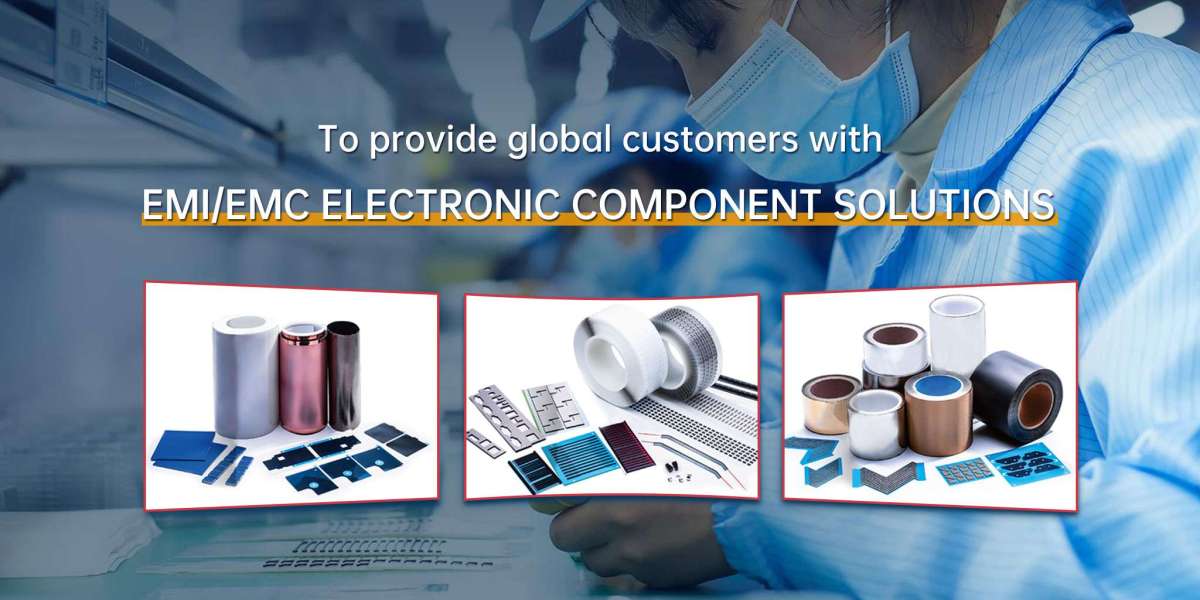From smartphones to medical equipment, EMI can disrupt the normal functioning of devices, leading to performance issues, data corruption, or even total failure. One of the most effective ways to combat EMI is through the use of EMI shielding materials. These materials help prevent interference from external electromagnetic fields, ensuring that electronic devices function properly and reliably.
What Are EMI Shielding Materials?
EMI shielding materials are substances specifically designed to block or absorb electromagnetic interference. The primary function of these materials is to create a barrier that protects sensitive electronic components from disruptive electromagnetic waves. EMI shielding materials can either reflect, absorb, or redirect these waves, depending on the design and requirements of the device.
By utilizing high-quality EMI shielding materials, manufacturers can prevent the leakage of electromagnetic radiation from their devices and also protect their equipment from external interference. This is crucial in a variety of industries, including telecommunications, automotive, medical, and consumer electronics.
Types of EMI Shielding Materials
Several types of EMI shielding materials are commonly used in the electronics industry, each offering distinct advantages depending on the application. Some of the most widely used materials include:
1. Conductive Metals
Metals such as aluminum, copper, and steel are some of the most commonly used materials for EMI shielding. Their conductive properties allow them to reflect and absorb electromagnetic waves effectively. Aluminum is especially popular due to its lightweight nature and excellent conductivity. These metals are often used in the construction of enclosures, casings, and other shielding applications where high effectiveness is required.
2. Conductive Coatings
Conductive coatings are applied to non-metallic surfaces to provide EMI protection. These coatings often contain materials such as silver, copper, or nickel. Conductive coatings are commonly used on plastic or composite parts, enabling the shield to cover a larger surface area while remaining lightweight. These coatings are perfect for applications where size and weight are important considerations.
3. EMI Shielding Fabrics
For flexible applications, conductive fabrics made from materials like copper, nickel, or silver are a popular choice. These fabrics are woven with conductive fibers and are lightweight yet effective at blocking EMI. They are commonly used in cables, flexible enclosures, and even clothing for medical devices that require shielding from electromagnetic fields.
4. EMI Shielding Foams
EMI shielding foams are made from materials like graphite or copper-infused foam. These materials provide both absorption and insulation, helping to shield devices from high-frequency interference. Foams are typically used when there’s a need to conform to irregular surfaces or compact spaces, ensuring comprehensive protection.
5. Ferrite Materials
Ferrite materials are ceramic compounds that can absorb high-frequency electromagnetic waves. They are often used to shield cables and connectors. Ferrite cores can be easily integrated into cables to suppress EMI, ensuring that the signal transmission remains clear and uninterrupted.
Why Are EMI Shielding Materials Essential?
Without proper shielding, sensitive electronic devices are susceptible to interference that can degrade performance, cause malfunction, or even damage components permanently. EMI shielding is especially crucial in applications such as medical devices, where a malfunction could have serious consequences, or in automotive systems, where interference can compromise safety-critical functions.
Choosing the right EMI shielding materials is vital to ensuring the reliability and longevity of electronic products. For more information on how to select the best EMI shielding materials for your specific needs, visit this link for more details.
Conclusion
As electronics continue to become more advanced, the need for effective EMI shielding grows. By incorporating the right materials, manufacturers can protect devices from interference, ensuring that they operate reliably and safely. Whether it’s through conductive metals, fabrics, coatings, or foams, choosing the right EMI shielding materials is essential for preventing performance issues and ensuring long-term success.


